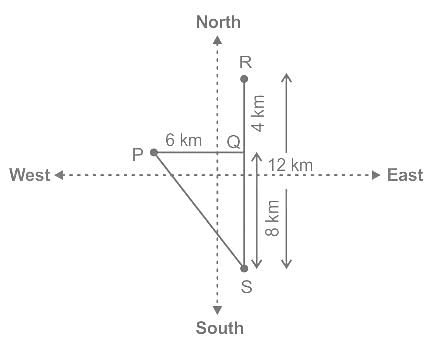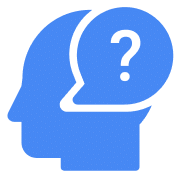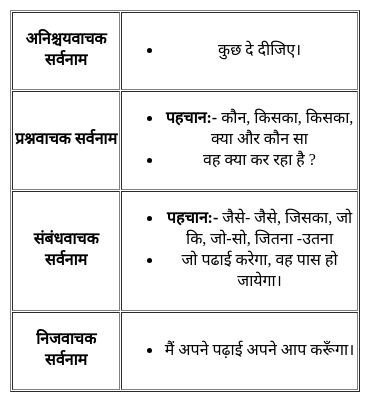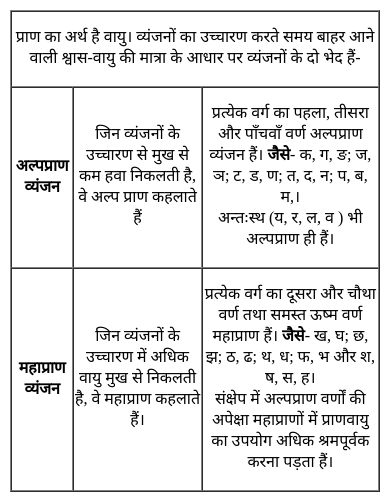DSSSB PRT Mock Test - 9 - DSSSB TGT/PGT/PRT MCQ
30 Questions MCQ Test DSSSB PRT Mock Test Series 2025 - DSSSB PRT Mock Test - 9
P is 6 km west from point Q. Point R is 4 km north to point Q. S is 12 km south from point R. Now point S in which direction and how far from point P?
Direction: Read the following information carefully and answer the questions that follow.
A blacksmith has five iron articles A, B, C, D and E each having a different weight.
I. A weight is twice as much as of B.
II. B weight is four and half times as much as of C.
III. C weight is half times as much as of D.
IV. D weight is half as much as of E.
V. E weight is less than A but more than C.
Q. Which of the following is the lightest in weight?
A blacksmith has five iron articles A, B, C, D and E each having a different weight.
I. A weight is twice as much as of B.
II. B weight is four and half times as much as of C.
III. C weight is half times as much as of D.
IV. D weight is half as much as of E.
V. E weight is less than A but more than C.
In the ongoing free trade agreement talks between the UK and India, the key unresolved issue revolves around the level of protection for which type of products from the agricultural sector?
The average of 8 numbers 12, 19, 23, 7, ‘x’, 9, 26 and 13 is 16. What is the value of ‘x’?
A and B can complete a work in 40 and 50 days respectively. First A completed 60% of the work and then left the work. After him B completed the remaining work. For how many days does B work?
Pipe P can fill a tank in 120 minutes. If the efficiency of Pipe Q is half the efficiency of Pipe P, in how many minutes can both the pipes fill the tank together?
In a triangle ABC, the incentre is at 0. If ㄥBOC = 100°, find ㄥBAC.
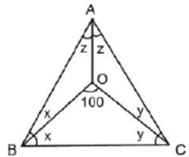
Two horses started simultaneously towards each other and meet each other 3 h 20 min later. How much time will it take the slower horse to cover the whole distance if the first arrived at the place of departure of the second 5 hours later than the second arrived at the point of departure of thefirst?
Directions: In each of the following questions, a sentence has been given in Active (or Passive) Voice. Out of the four alternatives suggested, select the one that best expresses the same sentence in Passive/ Active Voice.
Do you imitate others?
Directions: The passage below is accompanied by a set of questions. Choose the best answer to each question.
Where does the mind end and the world begin? Is the mind locked inside its skull, sealed in with skin, or does it expand outward, merging with things and places and other minds that it thinks with? What if there are objects outside—a pen and paper, a phone—that serve the same function as parts of the brain, enabling it to calculate or remember? You might say that those are obviously not part of the mind, because they aren't in the head, but that would be to beg the question. So are they or aren't they?
Consider a woman named Inga, who wants to go to the Museum of Modern Art in New York City. She consults her memory, recalls that the museum is on Fifty-third Street, and off she goes. Now consider Otto, an Alzheimer's patient. Otto carries a notebook with him everywhere, in which he writes down information that he thinks he'll need. His memory is quite bad now, so he uses the notebook constantly, looking up facts or jotting down new ones. One day, he, too, decides to go to the museum, and, knowing that his notebook contains the address, he looks it up.
Before Inga consulted her memory or Otto his notebook, neither one of them had the address "Fifty-third Street" consciously in mind. So what's the difference?
Andy Clark, a philosopher and cognitive scientist at the University of Edinburgh, believes that there is no important difference between Inga and Otto, memory and notebook. Clark rejects the idea that a person is complete in himself, shut in against the outside, in no need of help.
How is it that human thought is so deeply different from that of other animals, even though our brains can be quite similar? The difference is due, he believes, to our heightened ability to incorporate props and tools into our thinking, to use them to think thoughts we could never have otherwise.
One problem with his Otto example, Clark thinks, is that it can suggest that a mind becomes extended only when the ordinary brain isn't working as it should and needs a supplement—something like a hearing aid for cognition. This in turn suggests that a person whose mind is deeply linked to devices must be a medical patient or else a rare, strange, hybrid creature out of science fiction—a cyborg. But in fact, he thinks we are all cyborgs, in the most natural way.
The idea of an extended mind has itself extended far beyond philosophy. Clark's idea has inspired research in the various disciplines in the area of cognitive science (neuroscience, psychology, linguistics, A.I., robotics) and in distant fields beyond. It is clear to him that the way you understand yourself and your relation to the world is not just a matter of arguments: your life's experiences construct what you expect and want to be true.
Q. What according to Clark is true about Igna and Otto?
'यह सब तब हुआ जब मैं घर पर नहीं था' रचना के आधार पर वाक्य भेद बताइए।
What are some of the challenges faced by single-parent families?
I. Balancing work and family responsibilities
II. Financial hardship
III. Higher level of stress
Which of the following statements best summarizes Piaget's view of moral development?
I. Moral development is primarily determined by the rewards and punishments provided by parents and teachers.
II. Children's ideas about morality and rules change as they grow and develop cognitive abilities.
Assertion (A) : Children acquire skills, values and customs only through formal schooling.
Reason (R) : Socialisation of children is a simple and linear process.
Choose the correct option :
One of the following is a reason for mental ill-health in students:


